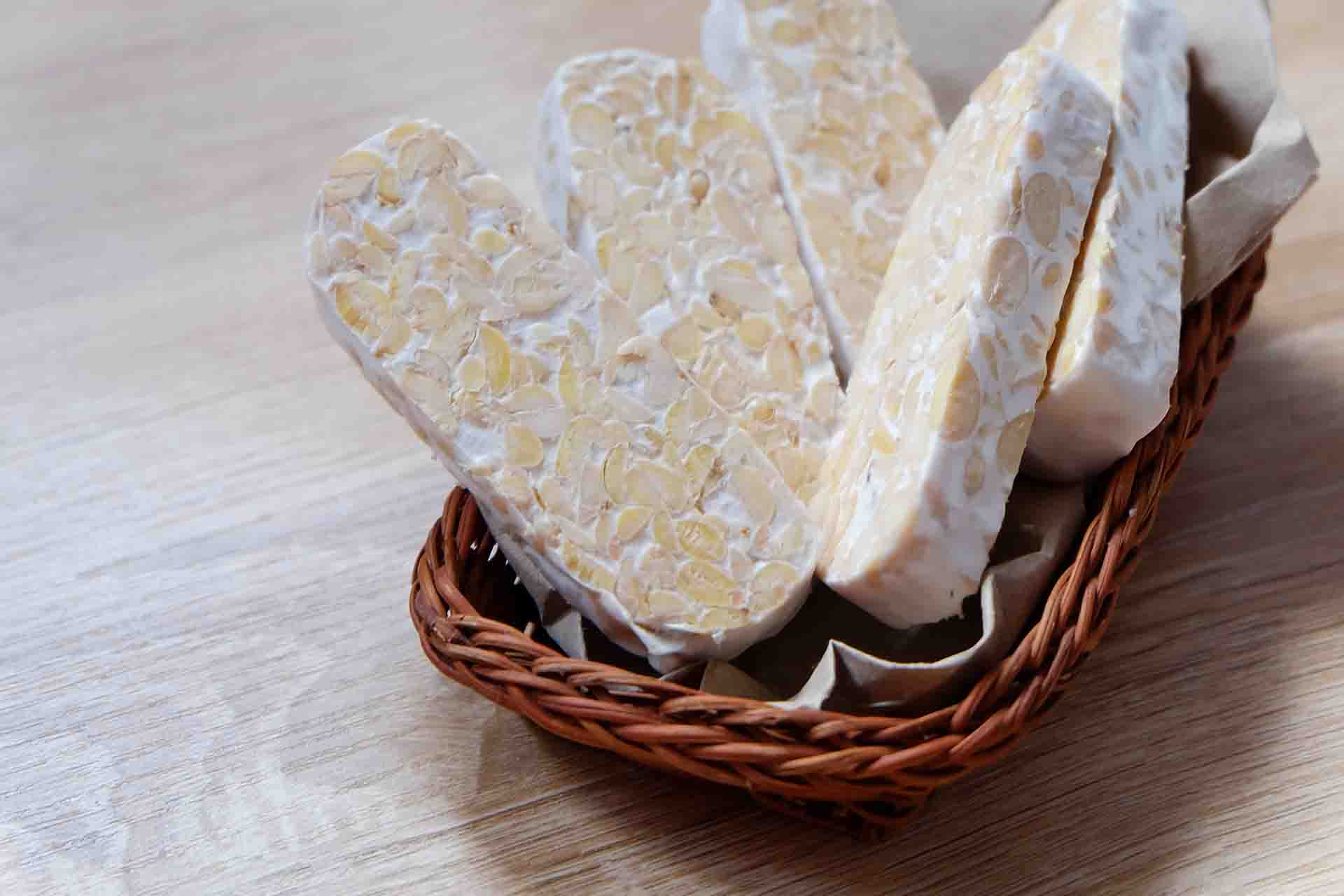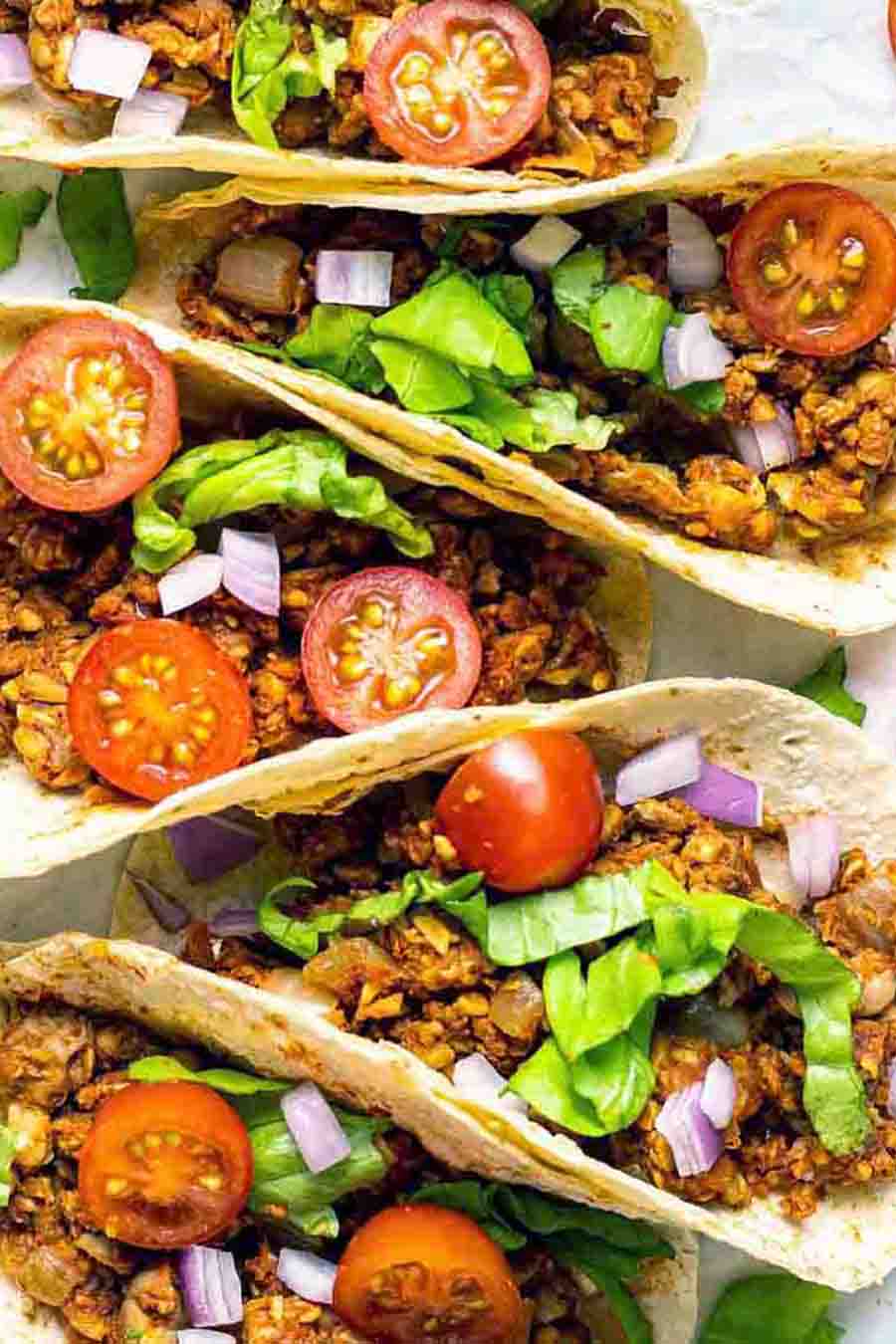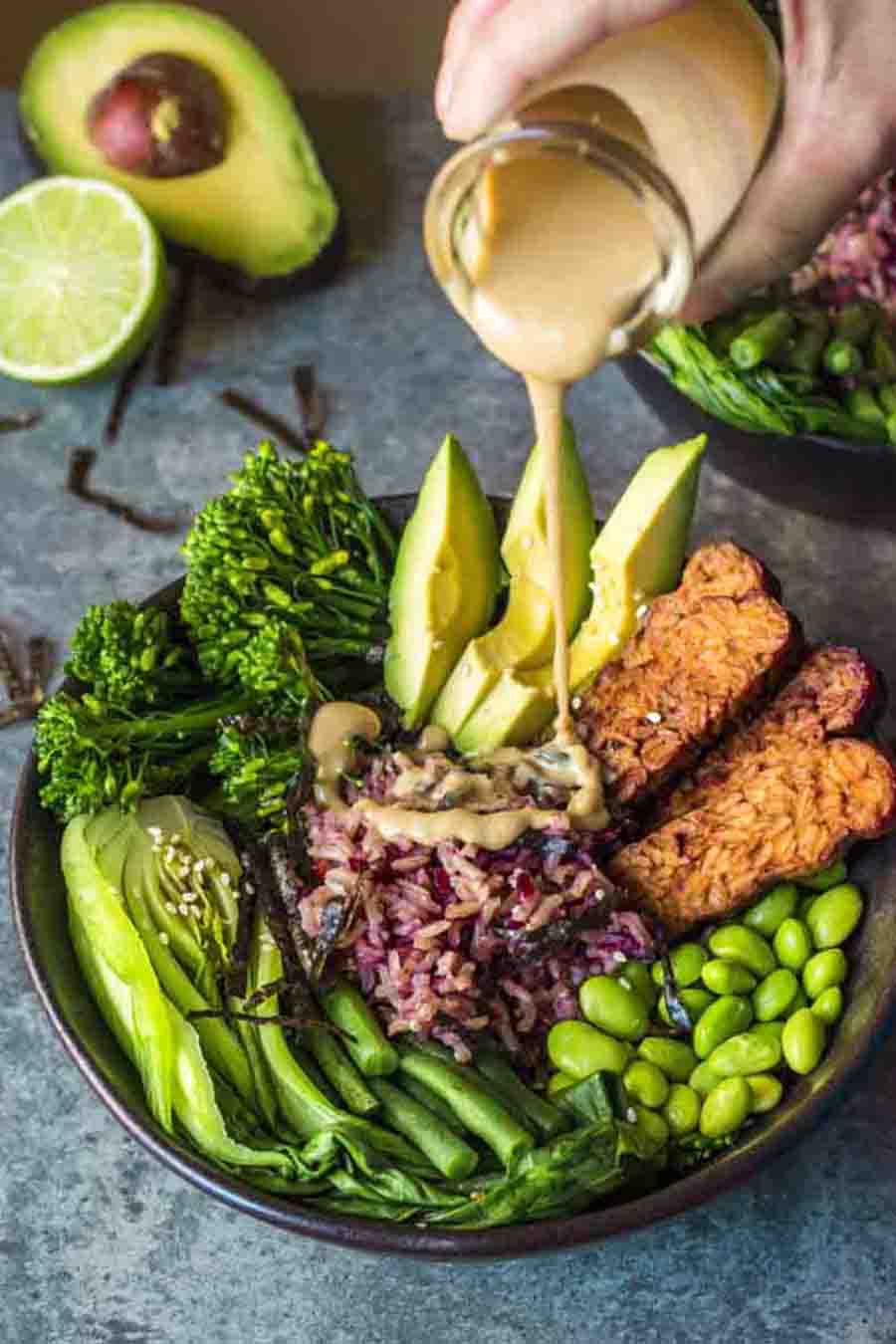Home / Guides / Food & Drink Guides / Plant Proteins / Tempeh
Tempeh
Tempeh is an earthy fermented plant protein that is a staple for people everywhere.

Published: May 2015
Last Update: September 2022
Reading Time: 8 minutes
It's been around for ages
Notwithstanding its long history, many people still haven't heard of tempeh, let alone cooked with it.
Let's change that.
First, we'll cover the origins of tempeh, so you know what you're eating. Next, you'll get evidence-based nutrition information from licensed dietitians. Then there's a great shopping guide, so you'll know what to look for at the stores, saving time.
Finally, there's a wide selection of vegan recipes to get you started.
Here's everything you need to know.
QUICK NAVIGATION

Uncooked tempeh / Source
1. Basics
If you're new to tempeh, start here.
Origins
Tempeh originated in Indonesia, where it could be considered the oldest food technology in the history of the Javanese people.
The book Serat Centhini — a twelve-volume compilation of Javanese tales and teachings written in 1814 — mentions it, indicating that tempeh had been produced and eaten by its publication.
Food historians believe this soy product may have come from the Chinese making a similar product, soybean koji; soybeans fermented with Aspergillus molds. The Rhizopus starter that tempeh uses could have been due to its better adaptation to the Indonesian climate.
In Europe, this versatile plant protein came from the Dutch, who once colonized Indonesia.
Here in the US, it’s only been known since 1955 when it appeared in Possible Sources of Proteins for Child Feeding in Underdeveloped Countries, published in the American Journal of Clinical Nutrition.
How is it made?
The traditional process begins with cracking whole dried soybeans with a grain mill.
Next, the beans are soaked overnight and dehulled. After they’re drained and rinsed, the soybeans are cooked until tender. Once they’re cool, it’s time to inoculate the soybeans with the Rhizopus oligosprorusstarter.
When complete, the inoculated soybeans incubate for 24 – 48 hours. This time allows the fermentation process to occur, and a thick layer of white mycelium mold binds the soybeans into a firm cake.
Don’t worry; the mold (Rhizopus) that is used is GRAS (Generally Recognized as Safe) by the US Food and Drug Administration (FDA). Foods fermented with Rhizopus can be beneficial as a detoxifying agent against food toxins and increase the digestibility of certain legumes. (1, 2)
Finally, the finished fermented cakes are steamed, packaged, and refrigerated, ready for various cooking methods.

Medical professional / Source
2. Tempeh nutrition information
Evidence-based nutrition information from licensed dietitians.
Unlike other soy foods like tofu and textured vegetable protein, tempeh is a nutrient-dense whole soy food.
But please don’t listen to me; I’m not a dietitian.
For accurate, evidence-based information, I turned to experts on vegan nutrition.
Here’s what they had to say.
Nutrition information
Long recognized as a nutrient-dense food, soybeans contain all of the essential amino acids as well as an impressive list of vitamins and minerals like:
- Calcium
- Iron
- Magnesium
- Manganese
- Phosphorous
- Potassium
- Selenium
- B vitamins
- Zinc
Soy also contains fiber, omega-3, and omega-6 fatty acids and is an excellent source of protein.
I checked with an expert on vegan nutrition, Anya Todd, MS, RD, LD to know more.
Experts agree
According to Todd, the nutrition in soy foods can vary among different preparations, so she recommends consuming whole soy foods like tempeh to guarantee the highest amount per serving.
“Soy is perfectly healthy in moderation. Two to three servings of whole soy foods a day is a safe recommendation.”
Research shows that people who eat one to two servings of soyfoods daily gain many health benefits, such as reducing the risk of heart disease, osteoporosis, and specific forms of cancer. (3, 6)
Author and vegan dietitian Virginia Messina, MPH, RD, concurs.
“Don’t be afraid of these foods and don’t ignore them. Plant proteins are good for you.”
Messina places tempeh into the "core vegan foods" group, which she recommends including in any healthy eating plan. (7)
Soy isoflavones
Soybeans contain phytoestrogens called isoflavones.
Some people claim that these soy isoflavones act like the female sex hormone estrogen in the body and can potentially increase the risk of cancers — especially breast cancer — and reduce testosterone levels in men.
But concerns about adverse effects are not supported by the clinical literature available at the time of this writing.
Soy is one of the most researched foods — nearly 2,000 soy-related papers published annually — and based on the health benefits in these studies and the benefits noted in clinical trials, soy is not only safe to eat but also beneficial when consumed in moderation. (2, 3)
Genetically modified organisms (GMOs)
Some people will avoid tempeh because they are afraid to consume GMOs.
A genetically modified organism (GMO) is any organism whose genetic material has been manipulated in a lab using genetic engineering techniques. Scientists alter genes using DNA from different living organisms like bacteria or viruses to get specific traits such as resistance to disease or tolerance of herbicides or pesticides. (4)
Soybeans are the second-largest crop grown in the US after corn and are also one of the top genetically modified crops.
These numbers are significant because even if you’re not eating soy foods directly — if you’re eating animals — you’re most likely still consuming soy. Currently, 85 percent of all GMO soybeans end up in animal feed for farmed animals, where it eventually ends up on your plate.
Buying GMOs
There are criticisms about the practice surrounding bioengineering and the production of genetically modified organisms. More than 60 countries worldwide have significant restrictions or outright bans on their manufacture and sale.
Here in the US, the government has approved using bioengineered crops. (4)
When buying soy tempeh, unless the product has a specific GMO-free label, then there’s a good chance it’s genetically modified.
Finding non-GMO is easy for those who avoid GMO soy. Look for the information on the label when purchasing.

Shopping carts at the grocery store / Source
3. Shopping guide
Here’s what you need to know before you head to the store.
Finding tempeh in stores
It used to be that you could only find it in select all-natural grocery stores, but that is no longer the case.
Today, it can be found alongside tofu in the refrigerated section of your local supermarket. There are a variety of flavors, styles, and brands available.
Tempeh brands
4. Vegan tempeh recipes
Get ready to get cooking. Here are vegan recipes for inspiration.
Recipes to try
- 15-minute Tempeh Tuna Salad
Your Daily Vegan
- Tempeh & Black Bean Sausage Burgers
My Quiet Kitchen
- Tempeh Buddha Bowl
Running on Real Food
- Mexican-Style Tempeh Tacos
My Plantiful Cooking
- Teriyaki Tempeh
The Vegan Larder
- Vegan Sloppy Joes (Gluten-Free)
Vegan Huggs
- Miso Tempeh Noodle Bowl
Plant-Based Jess
- Asian Greens & Tempeh Nourish Bowl
Rainbow Nourishments
- Indonesian Noodles (Bami Goreng)
Go Dairy Free

Truth in advertising
I am committed to providing accurate information to the vegan community. Meticulously researched, the topic explored in this guide contains the information available at the time of publishing.
I don’t just say it; I source it too.
Please contact me if you find incorrect data.










